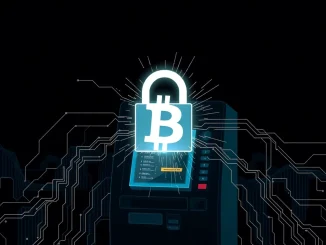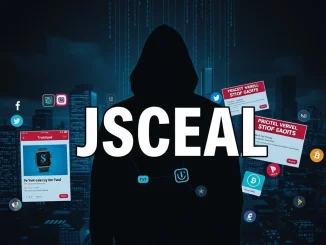
In the world of cryptocurrency, security is paramount. But lurking in the digital shadows are threats like malware designed specifically to steal your valuable assets. A recent significant action by law enforcement highlights this ongoing battle: the U.S. Department of Justice (DOJ) has taken down key infrastructure used by cybercriminals.
What is LummaC2 Malware and Why is it a Threat?
The target of this operation was the LummaC2 malware, a notorious information stealer. Unlike simple viruses, LummaC2 is sophisticated, designed to infiltrate systems and quietly siphon off sensitive information. Its primary targets include:
- Banking credentials
- Personal login details
- And critically for our readers: crypto wallet seed phrases and private keys.
This malware operates as a ‘Malware-as-a-Service’ (MaaS), meaning its creators sell or lease it to other criminals, making it widely accessible for malicious campaigns. The scale of its impact is staggering, affecting at least 1.7 million victims globally by compromising their sensitive data.
The DOJ Domain Seizure Explained
The recent action involved the DOJ domain seizure of five internet domains. These domains were not just websites; they were critical pieces of infrastructure used by the LummaC2 operators and their affiliates to:
- Distribute the malware to new victims.
- Control infected computers (Command and Control servers).
- Receive the stolen data from compromised systems.
By seizing these domains, authorities have dealt a significant blow to the malware’s operation, disrupting its ability to spread and communicate. This type of targeted infrastructure takedown is a key strategy in combating large-scale cybercrime.
Protecting Against Crypto Wallet Theft
The fact that LummaC2 targets crypto wallet theft should be a wake-up call for anyone holding digital assets. Malware is a primary vector for losing your crypto. How can you protect yourself?
Here are essential steps:
- Use a Hardware Wallet: For significant holdings, store your crypto offline on a hardware wallet. Your seed phrase never touches an internet-connected device where malware can access it.
- Be Skeptical of Downloads: Only download software from official, trusted sources. Avoid clicking on suspicious links or attachments in emails.
- Keep Software Updated: Regularly update your operating system, browser, antivirus software, and wallet applications. Updates often patch security vulnerabilities that malware exploits.
- Use Strong, Unique Passwords: Never reuse passwords. Use a password manager to keep track of complex, unique passwords for all your online accounts, especially crypto exchanges and wallets.
- Enable Two-Factor Authentication (2FA): Use 2FA whenever possible, preferably hardware-based 2FA (like a YubiKey) rather than SMS.
Broader Implications of the Cybercrime Crackdown
This cybercrime crackdown wasn’t a solo mission. It involved significant international cooperation, including the FBI, Europol, Japan’s Cybercrime Control Center, and Microsoft. This highlights a crucial point: cybercrime is a global problem requiring a coordinated global response. Actions like this DOJ seizure demonstrate that law enforcement agencies worldwide are actively working to dismantle the infrastructure supporting these criminal enterprises.
Ensuring Your Data Security
While crypto is a focus here, LummaC2 steals all sorts of sensitive information. Therefore, reinforcing your overall data security is vital. This includes protecting your banking details, personal logins, and any other sensitive data stored on your computer or accessed online. The same principles apply: be cautious, use strong security measures, and keep your systems clean.
In Summary: The seizure of domains linked to LummaC2 malware by the DOJ and international partners is a positive step in the fight against cybercrime. It disrupts a major threat responsible for widespread data and crypto theft. However, the threat of malware is ever-present. Staying informed and adopting robust personal security practices is your best defense in protecting your digital life and valuable crypto assets.



